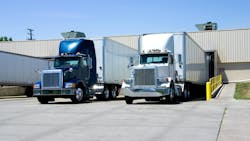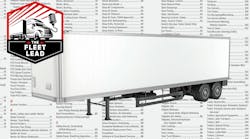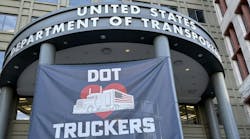Clark: Nuclear verdicts and rising insurance premiums put fleets at risk
Key takeaways
- Nuclear verdicts are devastating fleets, even when passenger vehicles are at fault.
- Strong maintenance, driver vetting, and safety tech investments help fleets reduce liability and control insurance costs.
- Tort reform will be needed to stabilize verdicts, but fleets can act now with proactive risk management strategies.
Fleet owners and managers are no strangers to challenges. From soaring vehicle and parts prices to supply chain disruptions, volatile fuel costs, and the ever-present threat of cyberattacks, running a trucking operation has never been tougher. But one issue stands out for its potentially devastating impact: skyrocketing insurance costs fueled by “nuclear verdicts”—jury awards that exceed $10 million in accident cases.
Why minimum coverage falls short
According to the Federal Motor Carrier Safety Administration (FMCSA), trucking insurance minimums vary by weight and cargo:
- $300,000 for non-hazardous freight in vehicles under 10,001 lb.
- $750,000 for non-hazardous freight in vehicles over 10,001 lb.
- $1 million for oil transport
- $5 million for other hazardous materials
Yet in practice, these limits barely scratch the surface. Severe tractor-trailer accidents can result in settlements in the tens of millions—amounts that can financially sink fleets, especially when passenger vehicles are at fault but the trucking companies bear the liability.
Nuclear verdicts reshape the legal landscape
Juries are increasingly handing down staggering punitive awards. Consider a Florida case in 2023, where a jury awarded $125 million for an accident involving a small carrier. No fatalities occurred, but severe injuries and the fleet’s past compliance issues drove the verdict. Notably, the company had already closed its doors two years prior.
These cases underscore the disproportionate burden placed on trucking companies: liabilities that can wipe out even well-run fleets overnight.
Premiums on the rise and margins on the line
The ripple effect of heavy verdicts has sent insurance premiums soaring. Over the past decade, rates have surged as underwriters account for greater accident frequency, advanced vehicle repair costs, and unpredictable jury awards.
For small and midsized carriers, this is particularly punishing. Without the scale to absorb higher premiums, they face tough choices:
- Passing costs on to shippers
- Cutting maintenance budgets
- Slowing or halting fleet expansion
The result is a squeeze on already razor-thin margins, pushing many fleets toward the breaking point.
Building a stronger defense: Steps fleets can take
While tort reform may eventually address runaway verdicts, fleets can’t afford to wait. Practical, proactive steps can help lower risk and improve safety records today.
1. Put maintenance first
Brake and tire issues remain the leading out-of-service violations—and common contributors to serious accidents. Fleets should double down on:
- Preventive maintenance: Regular inspections and repairs
- Predictive maintenance: Using diagnostics to spot problems before they cause breakdowns
Neglecting maintenance doesn’t just increase accident risk, it magnifies liability exposure in court.
2. Raise the bar on driver standards
Drivers are the backbone of fleet safety but also its greatest variable. Hours-of-service violations, lack of valid CDLs, and substance abuse issues remain red flags. Fleets should focus on:
- Rigorous hiring and vetting
- Defensive driving programs
- Ongoing coaching and training
The driver shortage complicates these efforts, but lowering standards for the sake of staffing is a gamble few fleets can afford.
3. Invest in safety technology
Tools such as automatic emergency braking, lane departure warnings, and collision mitigation systems can reduce accident frequency and severity. While the upfront investment is steep, these systems pay dividends in both safety and legal defense, demonstrating a clear commitment to reducing risk.
The call for tort reform
Even with best practices in place, the fundamental issue remains: disproportionate damages that can cripple carriers. True relief will require tort reform that ties punitive awards more closely to actual harm. Until then, fleets must do everything possible to strengthen their defenses and reduce exposure.
Moving forward in a high-risk environment
The trucking industry stands at a pivotal moment. Insurance isn’t just a line item—it’s a lifeline. With nuclear verdicts reshaping the business landscape, survival depends on balancing cost pressures with a relentless focus on safety and risk management. By prioritizing maintenance, enforcing strict driver standards, and embracing technology, fleets can better protect themselves against both accidents and the courtroom.
About the Author
Jane Clark
Senior VP of Operations
Jane Clark is the senior vice president of operations for NationaLease. Prior to joining NationaLease, Jane served as the area vice president for Randstad, one of the nation’s largest recruitment agencies, and before that, she served in management posts with QPS Companies, Pro Staff, and Manpower, Inc.


